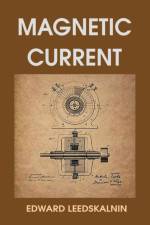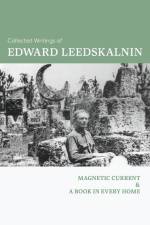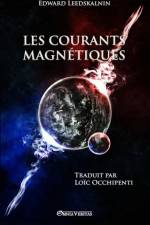av Edward Leedskalnin
241
The Collected Writings of Edward Leedskalnin is a compilation of two of Leedskalnin's works, Magnetic Current and A Book in Every Home. This eccentric sculptor and amateur scientist devoted most of his life to creating a large complex of megalithic stones that he quarried and carved himself. Edward Leedskalnin was born in Latvia in 1887. Although he only received formal education up to the fourth grade, he was very inquisitive and spent a large part of his youth reading. He was said to be a sickly boy and grew into a small man-reportedly measuring just 5 feet tall and weighing 100 lbs. At age 26, he was engaged to marry a 16-year-old girl named Agnes Skuvst, but the wedding was called off. Accounts differ, some claiming the wedding was canceled the day before it was scheduled and others saying that Leedskalnin was jilted at the altar. Regardless, he was heartbroken and shortly after emigrated to America. After reaching New York in 1912, he continued on to Oregon where he worked for an ax-handle manufacturer. By 1923, he had contracted tuberculosis. The illness prompted him to move to a warmer climate for his health. He chose Florida, where he purchased an undeveloped acre of land in Florida City. It was on this modest plot that he began Rock Gate (later renamed Coral Castle). This ambitious project involved extracting enormous pieces of oolite stone from his land, moving them into position, and carving them-entirely alone. The pieces include sculptures and carved stone furniture, as well as a two-story tower that served as his living quarters. The project was devoted to his "Sweet Sixteen," the woman who had rejected him many years earlier.Due to the scale of the project, some have dubbed it "Florida's Stonehenge." While it's unclear how Leedskalnin was able to complete it, it is all the more impressive considering his small stature and questionable health. When he wasn't hewing or carving stone, Leedskalnin was also conducting experiments and writing. His first published work was a pamphlet titled A Book in Every Home, published in 1936. The book is divided into three parts, with the first section focusing on Leedskalnin's views on relationships and education. In the second section, Leedskalnin offers his opinions on domestic arrangements and the raising of children. And in the third, he shares his views on voting and the role of government, advocating that "the weaklings" should not be allowed to vote. Leedskalnin also spent two years testing magnets and recording his findings from Rock Gate. These experiments would form the basis of Magnetic Current, published in 1945. In the book, Leedskalnin argues that electricity and magnetism are not separate phenomena but are instead two aspects of the same fundamental force, which he calls "magnetic current." He also proposes a new model of atomic structure and suggests that the fundamental particles of matter are tiny magnets that are constantly in motion.Leedskalnin presents a variety of experiments throughout the book, many of which involve the manipulation of magnetic fields using simple items like various magnets, car batteries, light bulbs, and coils of wire. He believed that his discoveries could provide insights into the mysteries of the universe, including the relative positions of the celestial bodies.Both works demonstrate Leedskalnin's unique view of the world and his eccentric personality. While some of his ideas may be seen as outdated or controversial, the books offer an intriguing glimpse into the mind of a self-taught philosopher and inventor who had a unique perspective on the world around him.









